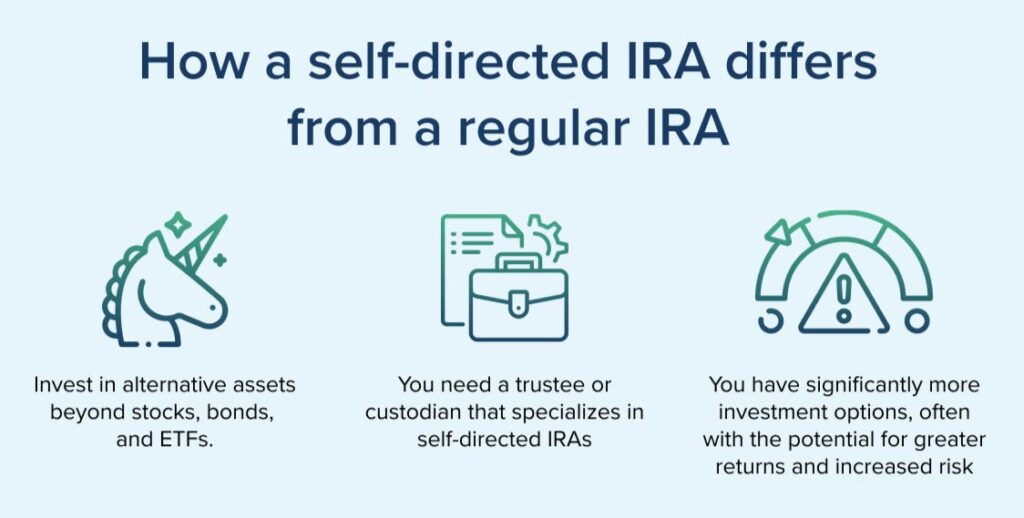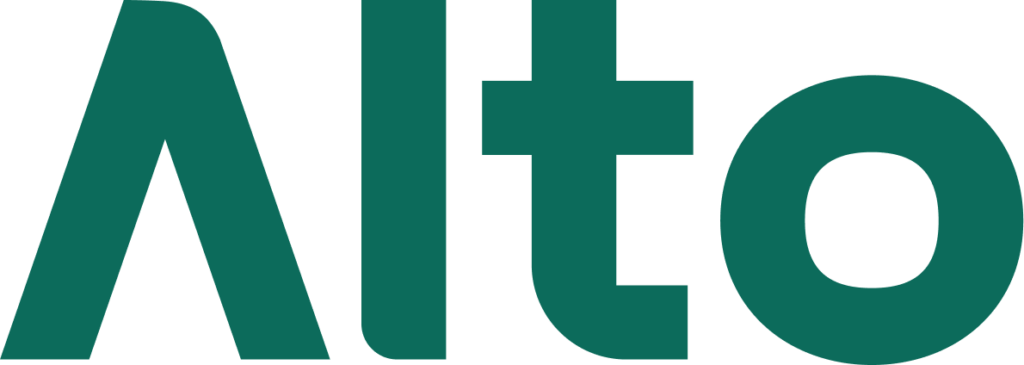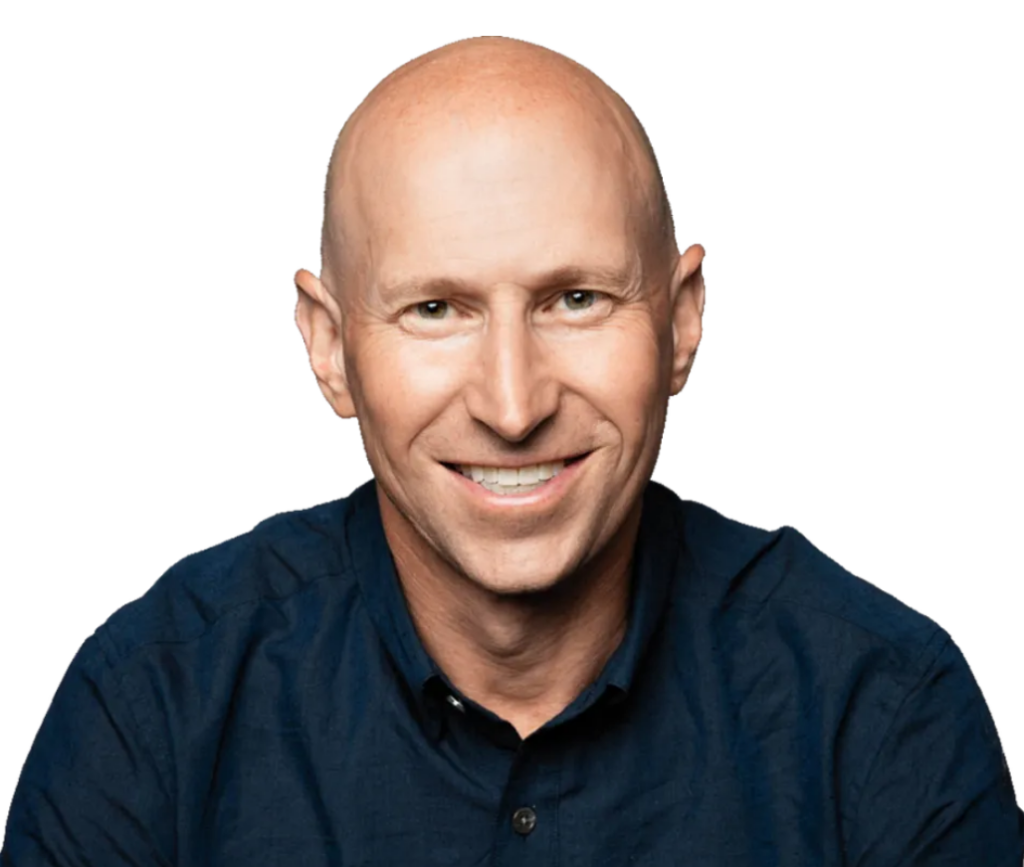Last Sunday, we showed you some really interesting retirement loopholes: creative, legal ideas hidden deep in the US tax code.
These hacks blow people’s minds, because it’s not common knowledge at all. Nobody teaches you this stuff in school! The government isn’t exactly running a PSA campaign. Heck, your accountant probably didn’t bring it up to you either.
And yet, these laws are just sitting out there in the wild, waiting for you to come along and take advantage of them.
But of all the retirement loopholes out there, arguably the most impactful one is using a Self-Directed IRA to acquire alternative assets. (also known as “The Peter Thiel Hack.”)
In this issue, we’ll dive into SDIRAs and show you exactly why they’re the perfect vehicle for getting alternative assets into your retirement account.
This issue is US-focused, but folks from other countries should find it interesting too.
Note: This issue is sponsored by our friends at Alto. As always, we think you’ll find it informative and fair.
Let’s go 👇
Table of Contents
What is an IRA?
The IRA (Individual Retirement Account) is a well-known and well-loved provision of the US tax code.
By investing money through an IRA, you can defer or completely eliminate taxes on both asset growth and income, resulting in potentially huge savings over the years.

There are plenty of rules and requirements that go along with using an IRA – including limitations on the types of assets you can actually invest in.
These limitations mostly don’t come from the government itself — in fact, the tax code is fairly permissive on what assets can go into an IRA. Legally speaking, you’re only prohibited from investing IRA funds in life insurance and “collectibles”. (Which is very broadly defined!)
Instead, investment limitations mostly come from the IRA custodians that administer IRAs on behalf of investors.
Why most IRA custodians limit your investment options
A custodian is a firm that administer and facilitate IRAs on behalf of investors. Typically, your IRA custodian is a bank, a brokerage, or another financial institution (yes, like Alto).
Custodians play a crucial role in the context of IRAs. They’re responsible not just for setting up an IRA and safeguarding its assets, but also for ensuring that the account is compliant.
That means keeping accurate records, filing reporting forms with the IRS, and monitoring contribution & withdrawal restrictions. As you might guess, that adds up to a lot of paperwork.
Since most people only invest in traditional assets anyway, avoiding the administrative burdens associated with non-traditional ones appeals to many custodians. They take a “mass market” approach, serving a wide swathe of the IRA market while saving a lot of money.

So, if you’re interested in alternative assets, are you out of luck?
Not at all! Some custodians are willing to do the extra paperwork.
Specialist firms like Alto offer a self-directed IRA which grant access to a much broader range of tax-advantaged investments for your retirement.
How the Self-Directed IRA works (SDIRA)
If you’re familiar with the world of retirement planning, you might know that there are different types of IRAs – including Traditional, Roth, SEP, and more.
The self-directed IRA (SDIRA) is actually not a separate type of IRA. Instead, it’s a colloquial way to refer to a standard IRA that has a non-standard suite of investment options.
The name itself is actually a bit of a misnomer, as it implies that an SDIRA is different from a normal IRA because the owner is able to “direct” their own investment strategy. In reality, many regular IRA owners can and do pick their own investments without help from an advisor.
- SDIRA custodians can vary widely in their investment process. Some allow you to make investments directly through an online portal, like you would a brokerage account.
- Others require that you source deals yourself and then instruct the custodian to make the purchase on behalf of your SDIRA.
- Investment options can be varied too, with possible holdings including direct real estate, private stock, private credit, crypto, and even livestock (yup, seriously).
In fact, as long as an asset doesn’t fall under one of the legally restricted IRA investments or transactions, an SDIRA can buy just about anything.
And that’s good news for investors, since IRAs and alternatives are a match made in heaven.

Why Alts are perfect for SDIRAs
Investing in alternatives through an SDIRA might be new to most people, but sophisticated investors have been using this strategy for years.
In fact, PayPal co-founder and early Facebook investor Peter Thiel provides a famous case study in effective use of SDIRAs.
In 1999, Thiel placed about $1,700 worth of then-private PayPal stock in his Roth SDIRA. That might not sound like a ton of money – but since PayPal shares were on the books at a $0.001 value, it amounted to a massive 1.7 million shares.
Within a few years, PayPal stock jumped in price as the successful company took on new investors. Thiel used some of the proceeds to buy shares in Palantir, a company that he co-founded, as well as to make an early investment in Facebook.
Today, that account is worth more than $5 billion. All tax-free.

Thiel’s ability to turn $1,700 into a tax-free $5 billion rests on his access to early investment opportunities in world-changing companies, something out of reach for the average investor.
Still, this story does highlight a couple reasons why the SDIRA is a perfect fit for alternative investments.
(Heads up – We’re about to talk about taxes here. We are not tax professionals and this is not tax advice, so always consult with an expert before making any decisions about this stuff.)
Alts can have huge upside potential
When you invest in a traditional stock or bond, the range of outcomes is usually pretty constrained. It’s rare for a blue-chip stock like Apple to fall to zero, but you’re also unlikely to see it 10x in price over the course of a few years.
Alternatives, on the other hand, can have a significantly wider distribution. Sure, categories like private credit are pretty stable, but what about investments in crypto or securitized artwork?
While significant underperformance is possible, so is significant outperformance.
What many investors don’t realize is that this dispersion can create significant tax issues.
To understand why, let’s consider the scenario in which you just liquidated a big alternative investment you made a few years ago.
- Suppose the investment went extremely well. In this case, your capital gains for the year will likely greatly exceed your capital losses – and you’ll owe taxes on the entire difference.
- But if the investment went poorly and your capital losses exceed your capital gains, you’re limited to using just $3,000 of the losses to reduce other income (although you can carry excess losses forward for future years).
Tax issues can get pretty complicated, but here’s the bottom line – capital gains tax rules aren’t symmetric, as investors are punished more for gains than they benefit from losses. In the words of the Tax Foundation, a business-friendly think tank:
“[T]he tax code contains a fundamental asymmetry: capital gains are subject to an immediate tax liability, while capital losses do not necessarily yield an immediate tax benefit.
To the extent that taxpayers are required to carry their capital losses forward many years before they are able to deduct them, the tax benefit of these losses diminishes each year that they are carried forward.”
Since alternatives have a high-variance return profile, they are especially exposed to this asymmetry.
But by housing high-upside alternatives in an SDIRA (like Thiel did) you can avoid this issue completely, since IRAs aren’t subject to capital gains tax!
Alts can throw off a lot of cash
Of course, investments aren’t just subject to capital gains taxes. You’ll also have to pay income taxes when your holdings generate cash, usually in the form of dividends or interest.
This issue is more compelling for some alternative categories than others. Private credit may not have huge appreciation potential, but high-rate debt instruments can certainly throw off a lot of cash each year.
Similarly, real estate can generate tons of cash as a result of lease or rent agreements.
Generating income is great, but paying income taxes isn’t – especially since income tax rates can be so much higher than capital gains tax rates.
By housing cash-generating alternatives in an SDIRA, investors can avoid paying taxes on this income each year. In addition to lowering your annual tax bill, this allows you to redeploy more capital into new opportunities.
Bear in mind that when you take distributions from certain types of SDIRAs, it will be classified as income, so you usually can’t avoid paying income taxes forever.
The key benefit is avoiding the annual tax bill that can drag on portfolio performance – so long as you continue to hold the assets in your IRA or take qualified Roth distributions.
Alts can have long holding periods (and yes, poor liquidity)
Finally, the long time period associated with retirement accounts perfectly suits the lack of liquidity associated with alternatives.
Generally speaking, you’ll have to pay a penalty tax on any IRA withdrawals made before the age of 59 ½. This is one of the key mechanisms used to ensure that the account is actually used for retirement purposes, and not just as a general tax avoidance scheme.
As a practical matter, putting investments with a long timeline in an account with a long timeline makes sense. But doing so also makes it much easier to psychologically deal with the lack of liquidity often associated with alternatives, since you can’t access the money for decades anyway.
Farmland, for instance, can’t exactly be used for day trading. Similarly, it can be much harder to liquidate shares in a startup than a publicly listed company. Due to the long time horizon of these alternative categories, they’re a perfect fit for a SDIRA.
In fact, that alignment is one of the reasons Alto is using farmland and startup investments to help launch their new marketplace. We now turn to Alto to see how they’re facilitating alternatives in SDIRAs, and what they envision the future of tax-advantaged alternatives to look like.
What is Alto?
Alto is a SDIRA custodian focused on (you guessed it!) alternative assets.
By creating an Alto IRA, you can open up a Traditional, Roth, or SEP account – all of which are self-directed.
Compared with most self-directed IRA providers, Alto has streamlined and modernized the account and investment process. The process is almost entirely online, and Alto handles all the administrative aspects for its users.
More importantly, they have a suite of integrated partners through which you can directly make alternative investments.This approach lets you invest in a wide variety of assets straight through the dashboard, including
- Startups (with AngelList)
- Peer-to-peer lending (with Prosper)
- Real estate (with CalTier)
- Artwork (with MasterWorks)
- Infrastructure (with InfraShares)
- And a whole lot more…
With a focus on alternative assets, Alto does not currently custody public securities. To get started, however, you can rollover or transfer cash from any existing IRA, 401(k), or other retirement vehicle – or initiate a contribution – to invest through the Alto platform.
With so many opportunities in the private offering world, Alto has recently introduced Alto Marketplace, which is the next evolution in Alto’s brand.
What is the Alto Marketplace?
Alto recently introduced their Marketplace, which is designed to curate exclusive private offerings in the alternative space.
These opportunities are only available to accredited investors and have minimum investment amounts – but investors may obtain access to the type of handpicked deals and veteran management usually reserved for institutional investors and the ultra-wealthy.
Alto can facilitate these expanded private security offerings because their affiliate companies, Alto Securities, LLC, and Alto Capital, LLC, are a broker-dealer and an exempt reporting advisor, respectively.

As it stands, most SDIRA custodians focus on just a few verticals in the alternative space. In contrast, Alto wants to expand into serving every vertical, becoming a central hub for alternative investing through SDIRAs.
Alto took the first step toward achieving that goal with their list of integrated partners – now, they view the Alto Marketplace as the next iteration in that process. Alto Marketplace already has several investment opportunities on offer – including one that’s closing very soon.
Alto marketplace investment opportunities
The Alto Marketplace currently features three investment opportunities.
- One is closing on December 31st, which means there’s extreme urgency to take action now if you’re interested (Alumni Ventures AI Fund).
- Another is in the growing space of farmland investing which offers a bit more time to invest (Vital Farmland Fund III).
- And the last one is an exclusive opportunity that Alto actually can’t publicly advertise – but if you’re interested, reply to this email, and we’ll to tell you more about this closed-door deal.
Investing in the Marketplace requires a simple, two-step process:
- Open up an Alto IRA. First, you’ll need to open up an Alto IRA, transferring in cash from an existing 401(k) or IRA account.
- Sign up for the Marketplace. Next, you can sign up for the Marketplace itself. You’ll need to complete a suitability process to determine you’re qualified to invest in these opportunities.
To get a taste of what Alto Marketplace can offer, let’s walk through the two opportunities that are currently open.
Alumni Ventures AI Fund
Alumni Ventures is a venture capital group that has already raised more than a billion dollars in financing spread across more than 1,200 portfolio companies. The group’s approach is to foster relationships with alumni at leading universities across the country, giving them the connections needed to access cutting-edge opportunities.
These days, nothing is more cutting-edge than the focus of Alumni Ventures’ fund: AI. The group is looking to deploy capital across leading early-stage AI-powered companies.
There is a very limited time to access this fund, with a hard close on December 31st. If you’re transferring an IRA, it can take just a matter of days, depending on the delivery method you select. But rolling over an existing 401(k) can take 2-4 weeks, so you may need to act quickly to get a spot.
Here are the rest of the details:
- Minimum Investment: $25,000
- Total Raise: $5-10M
- Fees: 2% Admin fee at closing
- Total Slots Available: 249
Click here to invest with the Alumni Ventures AI Fund.
Vital Farmland Fund III
Vital Farmland Fund III is run by Farmland LP, a farmland investment management firm. The firm’s strategy is to convert existing agricultural land into Certified Organic farmland, integrating sustainable practices and crop diversification.
Farmland LP uses this approach to help satisfy the large and growing market demand for organic food, which greatly exceeds the supply of organic farmland able to produce it. The firm already manages more than 16,000 acres of farmland and more than $250 million in farmland assets.
Here are the details of their latest offering, which will close August 2024:
- Minimum Investment: $50,000
- Total Raise: $250M
- Fees: 1.75% annually
- Total Slots Available: Unlimited
Click here to invest with the Vital Farmland Fund III.
Q&A with Eric Satz and Scott Harrigan
To better understand Alto’s vision for the future, we sat down with their leadership team to ask some questions of our own.
The following is our conversation with Eric Satz, founder and CEO of Alto, and Scott Harrigan, CEO of Alto Securities.


In one quick line, how would you describe what you do for Alto?
Eric:
I connect the dots that are hard to see.
Scott:
In general, I view my role at Alto to coach, guide, and inspire others towards the achievement of shared goals.
What is the problem you’re solving?
Eric:
We solve two problems. With the Alto Marketplace, we create access for accredited investors to curated and exclusive deals. With the Alto IRA, we make it easy for those individuals to invest with their IRA savings in a tax advantaged way.
Scott:
The problem we are solving is one of access. The alternative assets we are making available on our marketplace are typically limited to the ultra high net worth individuals or institutions. On the Alto Marketplace, retail accredited investors can now access those same type of deals.
Why do you personally believe in investing retirement dollars in private alternative assets?
Eric:
Because it is how I’ve built my own balance sheet. In my personal experience, my private market returns have far exceeded my public market returns.
Scott:
Coming from the public markets, I’ve seen first hand that the potential return from investing a portion of my retirement savings in appropriate alternative investments provides an opportunity typically reserved for high net worth individuals.
What are you most excited about for the future of Alto Marketplace?
Eric:
Alto Marketplace is another startup within Alto — we’re creating something from nothing to further our mission of Alternatives for All. It’s a de novo effort but built with the knowledge gained from serving as custodian to 25k+ clients who have invested more than $1.1B in alternative assets using our platform.
Scott:
The ability to have a meaningful impact on the retirement future of so many people is inspiring. I am motivated by the opportunity to provide a solution to the stress that’s created over the concerns of a retirement nest egg that falls short.
Disclosures from Alts
- This issue was sponsored by Alto
- Alts.co’s CEO Stefan von Imhof has an SDIRA through Alto
- The ALTS 1 Fund holds no interest in any companies mentioned in this issue.
- This issue contains no affiliate links
This issue is a sponsored deep dive, meaning Alts has been paid to write an independent analysis of Alto and their associated markets. Alto has agreed to offer an unconstrained look at its business, offerings, and operations. Alto is also a sponsor of Alts, but our research is neutral and unbiased. This should not be considered financial, legal, tax, or investment advice, but rather an independent analysis to help readers make their own investment decisions. All opinions expressed here are ours, and ours alone. We hope you find it informative and fair.












